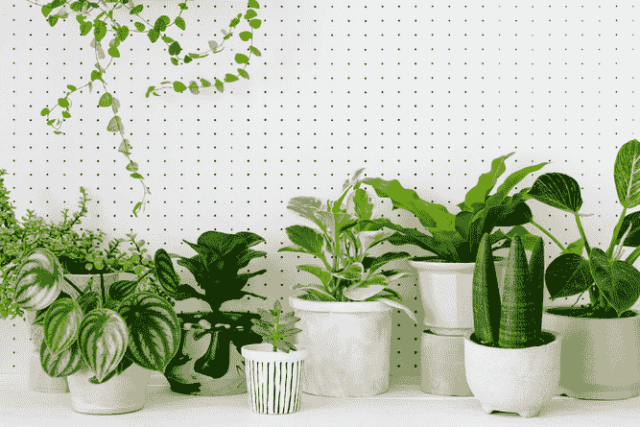Home is known to be the only safe place to protect us from dangerous illnesses, sunshine, contagious disease, pollution etc. However proper ventilation is needed else the air might become very toxic. Here is a list of 5 indoor plants that are great at cleaning the air in enclosed places and helping to turn carbon dioxide into oxygen at night.
- Aloe vera
Even though the benefits of aloe vera are well known, many individuals may not be familiar with its oxygen-increasing characteristics and air-cleaning, which are quite simple to maintain. Aloe Vera has the ability to remove air pollutants like aldehydes and benzene. What sets Aloe Vera apart from other plants is that it additionally releases O2 at night,making it an amazing indoor plant. It is used as a common culinary treatment for skin and hair care along with wound healing since it is packed with vitamins, amino acids, enzymes, and other substances.
- Areca Palm
This is well regarded by gardeners and ranked eighth in NASA research for the maximum elimination of formaldehyde. Some people even contrast its efficiency with that of an electric humidifier. since it may discharge up to a litre of water per day! Areca palms, sometimes referred to as butterfly palms, golden palms, and yellow palms, are efficient in filtering out harmful air pollutants such as formaldehyde, benzene, xylene, and toluene. In addition to causing headaches and dizziness, exposure to these could irritate your skin, eyes, nose, and throat. The effects of prolonged exposure to them include weariness, numbness in the hands and feet, and other symptoms.
- Snake Plant
The snake plant, commonly referred to as “Mother-in-law’s Tongue” is renowned for its astounding ability to produce oxygen. Because it uses respirators at night and photosynthesizes during the day, this particular plant is unusual in that it shouldn’t be maintained in a bedroom because it consumes oxygen at night. It is quite effective at eliminating indoor air pollutants such as formaldehyde, benzene, xylene, and trichloroethylene.
- Peace Lily
Peace Lilies feature a striking, eye-catching white flower. They are said to be an impression of fortune, and riches. Peace Lilynaturally filters the air and is quite effective in lowering indoor toluene and benzene concentrations. They are also effortless to maintain. Be cautious if you suffer from a pollen allergy since they might release pollen and flowery odours into the air. As per NASA, Peace lilies are useful in filtering your workplaces and residence from trichloroethylene and benzene.
- Gerbera Daisy
The Gerbera Daisy, possibly the most beautiful of the lot, is available in a variety of hues, including salmon, pink, red, yellow, white, purple, orange, and even bi-colours. At night, they release oxygen. According to NASA’s Clean Air Study, gerbera daisies remove air pollutants including benzene, formaldehyde, and trichloroethylene. They also aid in reducing tension and anxiety and assist to reduce interior dust and humidity. If you have breathing issues or sleep apnea, keep gerbera daisies by your bed for better sleep. While a location close to the window is preferable, avoid overheating it.
These are some of the plants that help you to filter harmful pollutants and improve the quality of air at your residence or workplace. Keep in mind some of these plants may be harmful to your pets or even animals if consumed, so keep them at a height. Overwatering your indoor plant may turn it yellow and rot at a faster pace, so keep that in mind.













































